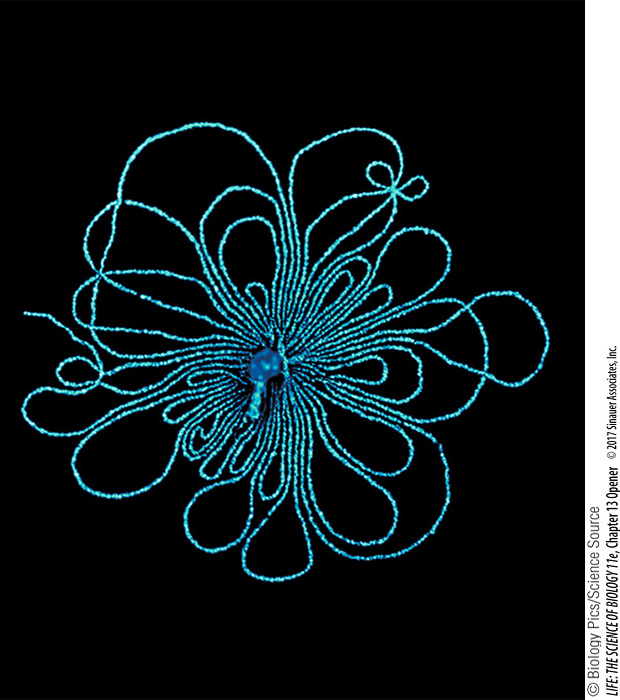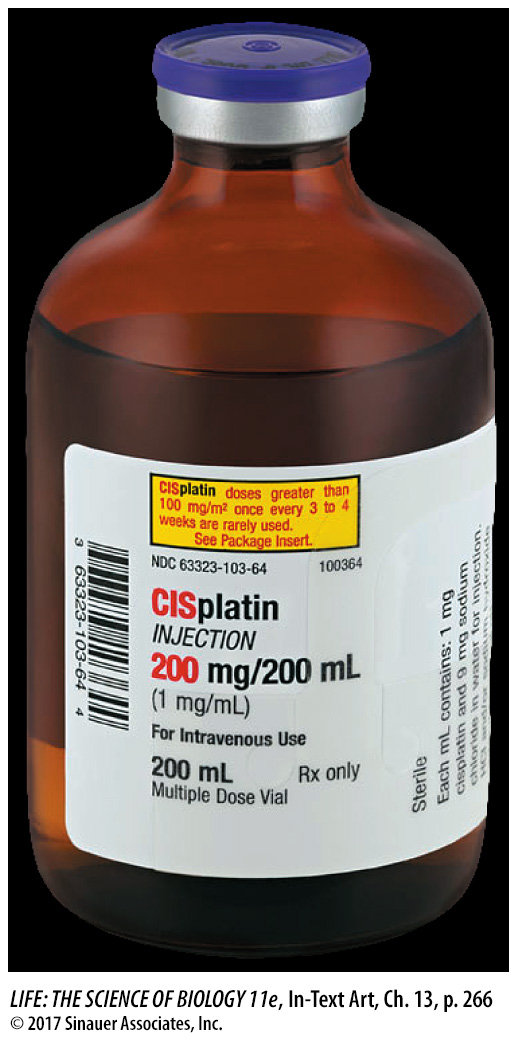Chapter Introduction
DNA and Its Role
in Heredity

investigating life
Targeting DNA Replication in Cancer Therapy
Testicular cancer occurs with rapid cell divisions of germ cells and often spreads to other organs. It is the most common cancer in young men and is one of the few tumors of adults that is highly curable, due to a drug called cisplatin.

Dr. Barnett Rosenberg, a scientist at Michigan State University, was curious about how electric fields might affect cells. He put bacteria into a growth medium with platinum electrodes connected to a battery. The result was striking: the bacteria stopped dividing. To generalize the effect of electromagnetism on cells, Rosenberg tried the experiment again, this time using copper and zinc electrodes. (You are probably familiar with the Cu/Zn system if you’ve taken a chemistry course.) This time the bacteria kept dividing. Only platinum electrodes inhibited cell division.
In light of the data, Rosenberg revised his hypothesis to propose that something leaked out of the platinum electrodes into the medium, and that this “something” blocked cell division. He confirmed his hypothesis by treating bacteria with the medium in which the platinum electrodes had been inserted; the bacteria did not divide. Realizing that cancer cells have uncontrolled cell division, he duplicated his experiments with tumor cells in a laboratory dish. His success at stopping tumor cell growth led to the isolation and development of cisplatin. The drug was so successful with testicular cancer that it has also been used with some success on other tumors. How does it work?
Cisplatin works by making the replication of DNA impossible. As you learned in the last chapter, an essential event for cell division is the complete and precise duplication of the genetic material, DNA. The two strands of DNA unwind and separate, each strand acting as a template for the building of a new strand. Strand separation is possible because the two strands are held together by weak forces, including hydrogen bonds. Cisplatin forms covalent bonds with nucleotides on opposite strands of the DNA, irreversibly cross-
What do we need to know about DNA replication to describe the mechanism of a drug that blocks it?